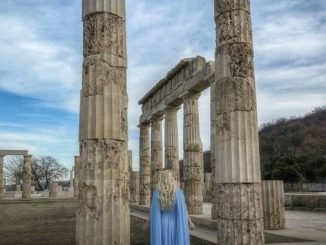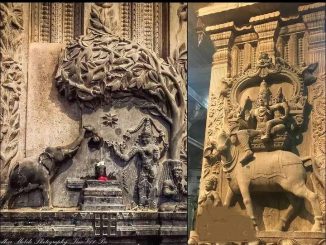16. Egyptian Obelisk: Symbol of power and divinity
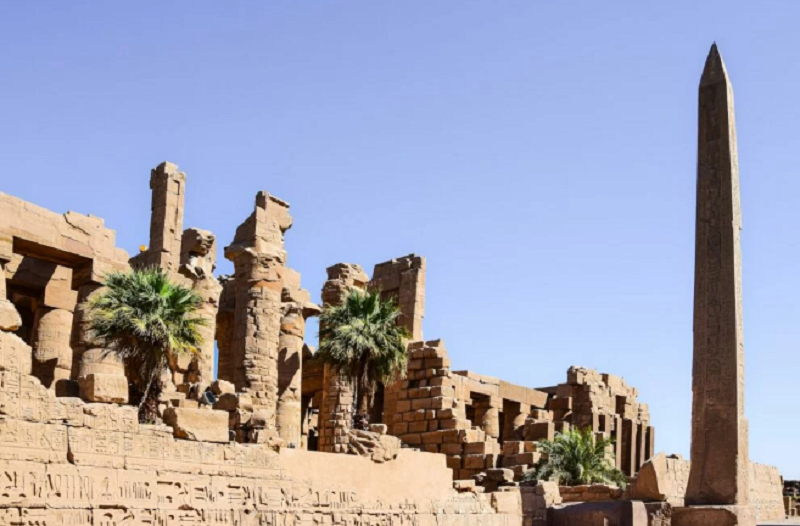
Luxor, Egypt
Egyptian obelisks are tall, slender monuments with inscriptions, often seen in pairs, that have fascinated people for thousands of years. These iconic structures are believed to date back to the Old Kingdom (circa 2686-2181 BC).
Obelisks were often built from a single piece of stone and were often carved with hieroglyphs honoring pharaohs and gods. They were placed in pairs at the entrance to the temple, serving as symbols of power and divinity. Hatshepsut’s obelisk at Karnak and the obelisks in front of the Luxor Temple are famous examples of this unique form of Egyptian architecture.
These timeless monoliths continue to stand as reminders of the grandeur and spirituality of ancient Egypt, even as they adorn the cityscapes of modern-day Egypt and its elsewhere in the world.
17. Giant red granite statue of Amenhotep III: Monument to majesty
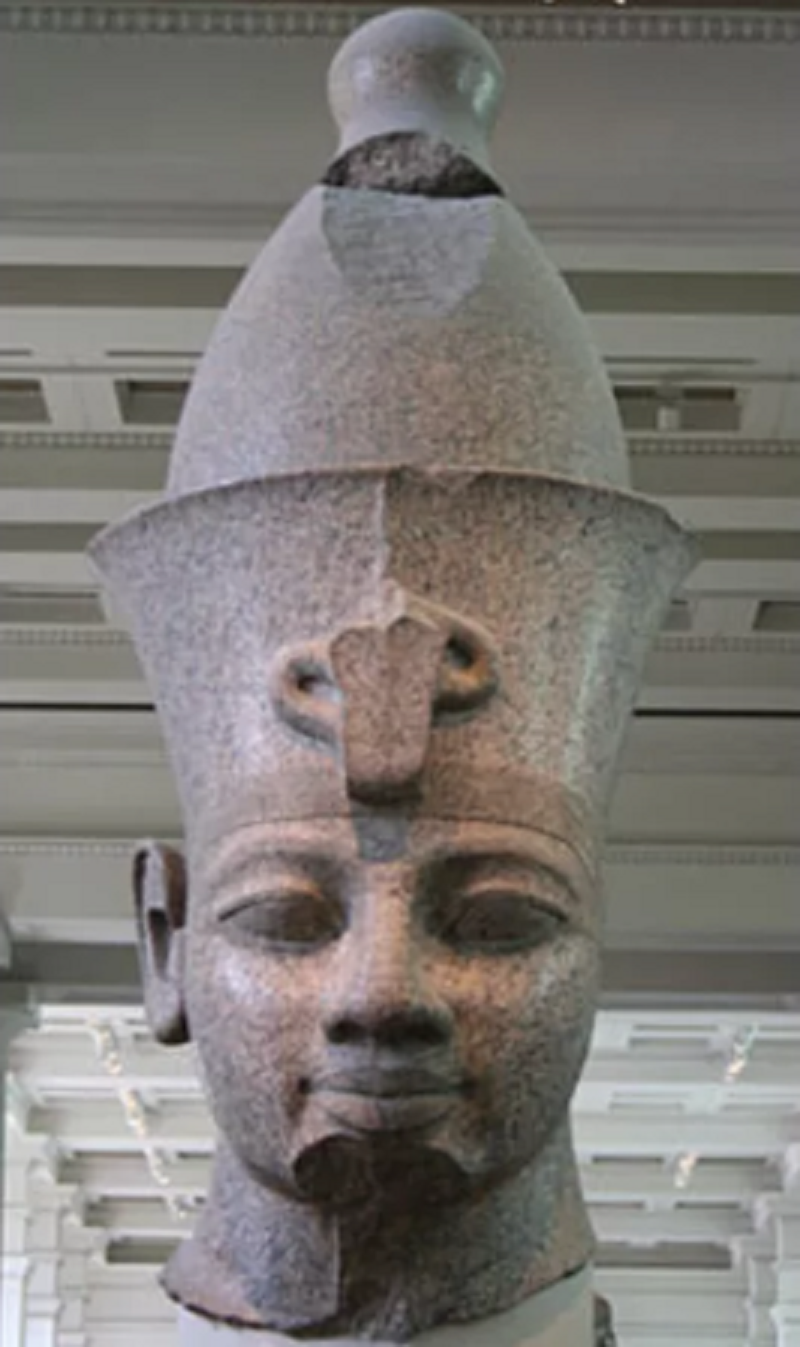
Monumental red granite head of Amenhotep III || Image source: Wikipedia
The giant red granite statue of Amenhotep III is an impressive piece of ancient Egyptian art. It was discovered in a Theban necropolis and dates back to the reign of Pharaoh Amenhotep III, who ruled in the 14th century BC.
This colossal statue, made from a single piece of red granite, is a testament to the majesty and power of this pharaoh. It originally decorated his mortuary temple on the west bank of the Nile at Thebes and was designed to depict the king in a sitting position.
This statue, approximately 18 feet high, is an outstanding example of ancient Egyptian sculpture, demonstrating the exquisite craftsmanship of the age and the importance of monumental art in commemorating and honoring respect the pharaohs.
18. Statue of Sekhmet: Guardian of divine wrath

Statue of Sekhmet | Photo source: British Museum
Sekhmet, the lion-headed goddess of ancient Egyptian mythology, is both protector and bringer of divine wrath. Numerous statues of Sekhmet have been discovered throughout Egypt, some dating back to the New Kingdom (circa 16th-11th centuries BC).
These statues often depict her with a lion’s head and a human body, holding a sun disc and an ankh (symbol of life). Sekhmet is associated with healing but she is also the goddess of war and destruction.
Statues of Sekhmet were placed in temples and mausoleums to invoke her protective and healing powers or to appease her anger. Her presence symbolizes the balance between the nurturing and fierce aspects of divinity.
19. Nesykhonsu’s Sarcophagus: A Glimpse of the Late Period
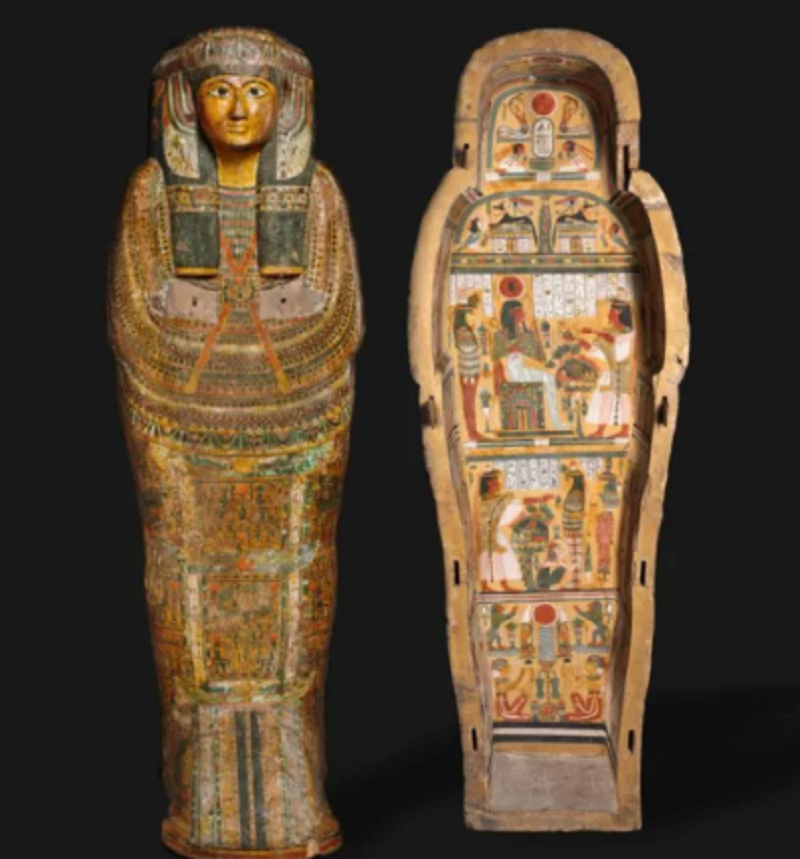
Coffin of Nesykhonsu | Photo source: Cleveland Museum of Art
Nesykhonsu’s sarcophagus, dating from the Late Late period (c. 664-332 BC), is an exquisitely decorated funerary coffin excavated in ancient Thebes. It is an exquisite example of the craftsmanship and religious beliefs of the time.
This wooden coffin is decorated with intricate carvings and hieroglyphs, highlighting reverence for the afterlife and meticulous preparation for one’s journey to eternity .
Nesykhonsu’s coffin, like many others of its time, is a testament to the long cultural and religious traditions of ancient Egypt, providing insight into their complex funerary practices.
20. Shabti Characters: Servants of the afterlife

Shabti characters | Image source: Wikipedia
Shabti statues, also known as ushabti or Shawabti, are small statues placed in tombs to serve the deceased in the afterlife. These figurines date from various periods in ancient Egyptian history, but they became especially popular during the New Kingdom (circa 16th-11th centuries BC).
Shabtis are created in multiples, usually numbered 365, representing each day of the year and are intended to perform labor for the deceased in the afterlife. It is believed that these figurines will come to life and perform all necessary tasks, helping the deceased escape from physical hardship.
The Shabti figures are a fascinating representation of the Egyptians’ spiritual commitment to the concept of the afterlife and their meticulous preparations for the eternal journey.
Conclusion
The ancient Egyptian civilization, with its rich tapestry of art, architecture and religion, left a lasting legacy that continues to captivate the world. From the grandeur of colossal statues to the intricacies of exquisitely decorated sarcophagi, and from the majestic presence of pharaohs to the fierce protection of lion-headed goddesses, These artifacts are not just relics of a distant past; they are portals into a world where life and death, strength and devotion, the temporal and the eternal are intertwined.
These ancient Egyptian artifacts bear witness to a civilization that revered the afterlife, honored its rulers, and sought to reconcile human existence with the divine. They illuminate the profound spiritual beliefs, artistic excellence and engineering feats of an extraordinary man. Each artifact tells a unique story about a society that has left an indelible mark on the annals of history.
As we gaze upon these treasures, we are reminded that while the sands of time may have covered the ancient world, its echoes continue to resonate in these captivating monuments. The enduring appeal of these artifacts is testament to an enduring fascination with the land of the pharaohs, where history, art and spirituality converged to create a civilization that still fascinates and inspires. inspire us today.
